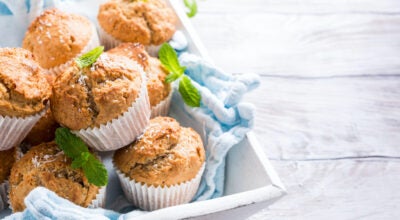The kitchen cupboard: toss or save
Published 11:26 am Wednesday, March 4, 2009
Have you looked –– really looked –– at the foods in your kitchen cupboards lately?
Is it time to bid some foods a fond farewell? Read on for tips to help you decide whether to toss, move or try to save common kitchen cupboard foods.
Kitchen cupboard foods
The following storage tips are based on food stored at a room temperature of about 70 degrees.
u Read labels carefully. They often contain important storage information and recommended “use by” dates.
uBaking powder –– 12 to 18 months or expiration date on container. Store tightly covered in a dry place. Mix one teaspoon baking powder with 1/3 cup hot water. If it foams vigorously, it still has rising power.
uBaking Soda –- 12 to 18 months or expiration date on container. Store tightly covered in a dry place.
Testing for freshness: Place 1 1/2 teaspoons in a small bowl. Add one tablespoon vinegar. If it fizzes, then it will still help leaven a food. If it doesn’t fizz, use it as an odor catcher in the refrigerator.
uShortening –– three to eight months opened; eight to 12 months unopened. Store in a tightly closed container in a cool, dark place. Shortening that has been stored too long will go rancid and develop an undesirable taste and odor.
uCanned Foods –- one to two years. The Canned Food Alliance recommends eating canned food within two years of processing. Many cans will include a “for best quality use by” date stamp. Avoid refrigerating opened canned foods in their can.
uSpices and herbs –– storage length is one year for herbs or ground spices, two years for whole spices. Air, light, moisture and heat speed flavor and color loss of herbs and spices. Store in a tightly covered container in a dark place away from sunlight. Give spices and herbs the sniff test. You’ll learn what fresh smells like so you can detect if they are getting old.
For more information, call Angela Treadaway at 410-3696.









